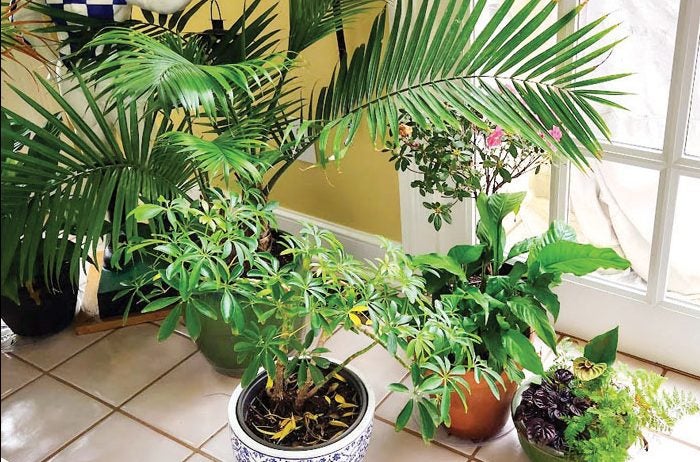Darrell Blackwelder: Keeping house plants happy during winter months
Published 12:00 am Saturday, January 14, 2023

- Indoor house plants
House plants have a difficult time adapting to a different environment when moved indoors for the winter. Most house plants were bred and developed from tropical understory plants. Limited light and dry indoor humidity create a challenging environment.
Reducing bright outdoor sunlight of nearly 10,000 to 5- to 15-foot candles initiate premature leaf drop. Weeping fig trees are extremely sensitive to deviations in light intensity and they will drop their leaves with the slightest change in light.
Below are a few solutions to keep houseplants actively growing during the winter months.
• Move house plants to an area indoors that has high natural or indirect light.
• Avoid placement near drafty doors or forced air heating vents. Both foliage and soil media dry out quickly.
• Mist house plants or place groups of plants on pans of rock filled with water. Adding an electrostatic humidifier is also an excellent method of maintaining moisture.
• Keep plants properly hydrated on a regular basis. Placing ice cubes on the soil media around the plant slowly irrigates house plants avoiding runoff and furniture and floor problems. Ice will not damage most plants with the exception of African violets.
• Leaf burn may be a result of the fluorides in treated drinking water. Leave the treated water in a container for a day or two, allowing the fluorides to dissipate reducing leave burn.
• House plants grow very slowly during the winter months; therefore, regular fertilization is generally not recommended. High soluble salt build-up from winter fertilization burns sensitive roots, reducing vigor, eventually killing the plant.
Darrell Blackwelder is the retired horticulture agent and director with the North Carolina Cooperative Extension Service in Rowan County. Contact him at deblackw@ncsu.edu.



